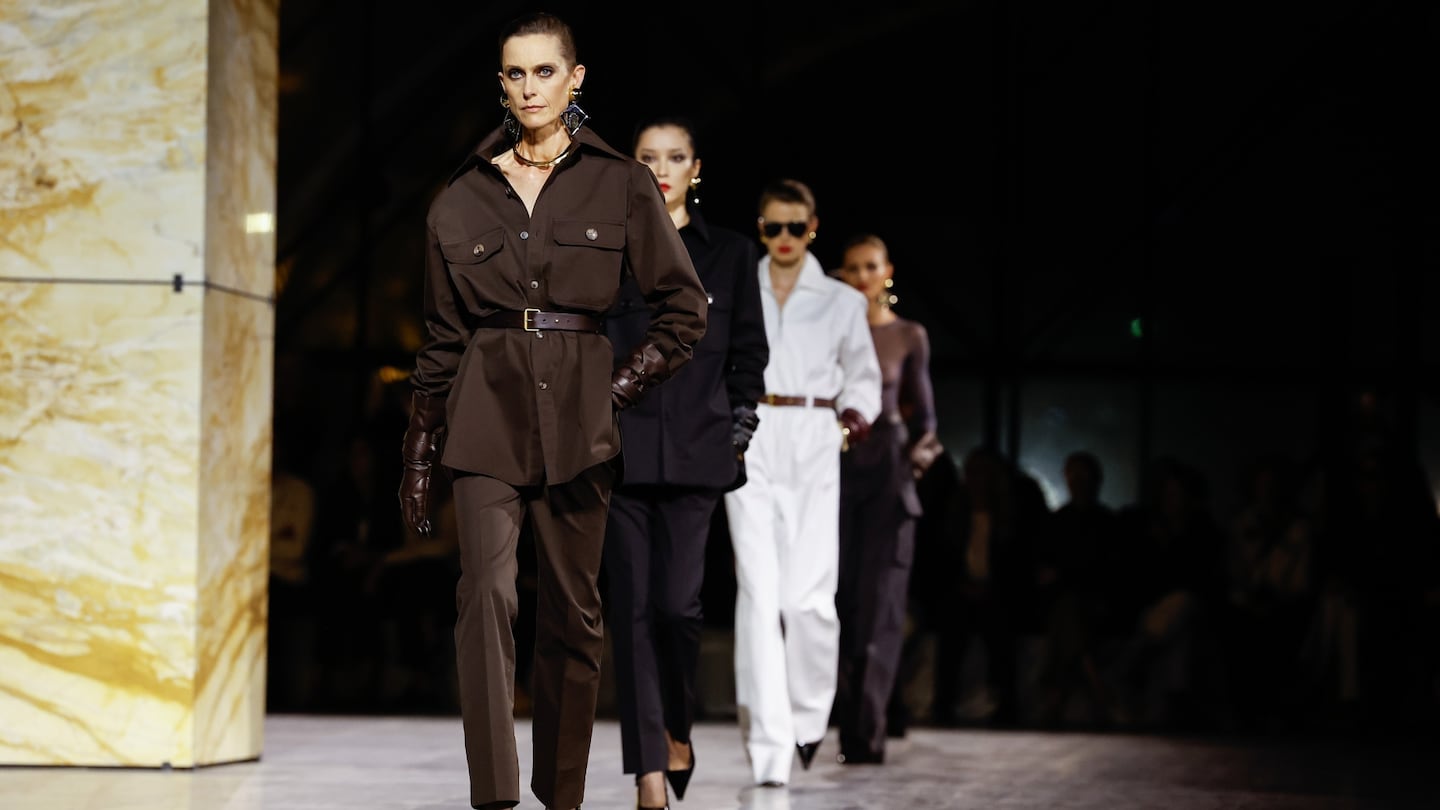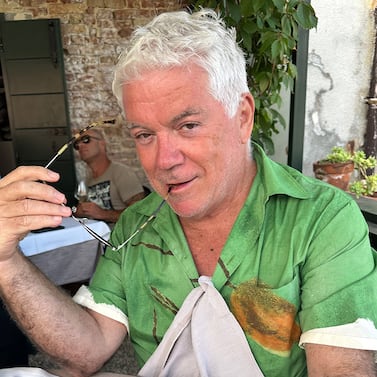
The Business of Fashion
Agenda-setting intelligence, analysis and advice for the global fashion community.

Agenda-setting intelligence, analysis and advice for the global fashion community.

PARIS — It’s only a wonder that, in her trawl through feminist history during her seven years at Dior, it’s taken Maria Grazia Chiuri so long to get round to witches. They are, after all, ur-feminist icons, and their presence could be felt in the occult symbology that decorated coats and skirts in the collection she showed on Tuesday. But the witch was less obvious on the catwalk than La Parisienne, the formidably seductive 19th-century prototype of the woman lauded in the international bestseller “How to be Parisian.” La Parisienne was a complex creature, blessed with beauty, touched by scandal, and mysteriously, financially independent. Her self-reliance made her a less ambiguous cipher for Chiuri’s latest consciousness-raising exercise than a witch, and her louche, lacy 19th century-ish confections added a fillip to the show.
But not half as much as guest artist Elena Bellantoni, who managed to use the platform given to her by Chiuri to mount an assault on late-stage capitalism and its pernicious impact on women. The walls that wrapped the showspace were a constantly shifting barrage of blaring slogans. “CAPITALISM WON’T TAKE HER WHERE SHE REALLY WANTS TO GO” seemed the most (or maybe least) apposite for a presentation designed to part a woman from her money in the name of greater profits for Chiuri’s paymaster, LVMH chief executive Bernard Arnault. The disconnect was quite surreal. Before the show, Bellantoni seemed gleefully aware that she was a Trojan horse in the belly of the capitalist beast. I complimented her on her Dior outfit. “I’m free to choose,” she said. “Unlike my mother, I have a choice.”
Chiuri’s recent brunetteness, after years as a blonde, presaged the darkness that ruled the collection. Bellantoni’s art was a more savage attack on the male gaze, but Chiuri said she was keen to redress the years of classic couture photography by men like Richard Avedon and Irving Penn, where sculpted chiaroscuro silhouettes obscured women’s faces. I wasn’t so sure about this observation, never mind that it downplayed the contributions of female photographers like Toni Frissell and Lillian Bassman. Nevertheless, Chiuri said she wanted to create a new iconography, so, for the first time, she used an actual photographic image in her show, created by her longtime collaborator Brigitte Niedermair. It was an image of the Eiffel Tower, soft, misty, not at all phallically thrusting.
That softness, that mistiness played into the most interesting clothes in the collection. Frayed at the edges and torn in places, they’d been treated to look worn, in the spirit of the Italian artist Alberto Burri, one of the stalwarts of the Arte Povera movement. Again, that disconcerting disconnect — signs of poverty used as expensive decoration. The outfits were paired with wrapped, raw sandals, and they made me think that Chiuri’s designs, which actually have a fundamental humility (especially this season), would benefit from presentations that were allowed to be human, rather than overscaled and overwrought.
ADVERTISEMENT
0 of 79
How bizarre that Saint Laurent, another Paris fashion grandee, should also take a turn for the humble. Or at least as humble as replacing the finest fabrics known to man with simple cotton suggests. Anthony Vaccarello has been listening to his heart. It told him basta! with the complications, the embroideries, the decorations that weighed down his peers: He found himself craving bare necessities. A fresh start. A jumpsuit in white cotton. Cargo pants and shirt dresses in cotton. A trenchcoat in cotton (heavy this time). “Doing almost nothing for me is hard,” Vaccarello acknowledged, “especially when I have to do a shirt and trousers.” And he admitted it hardly excited him to make something simple with such a basic fabric. But, like I said, he’d been listening to his heart. He’d grown tired of fashion the way he’d been doing it. Even the leggy micro-mini-lengths he’d made his own now felt wrong to him. Vaccarello wanted a new chapter. And, in this season of short(s), he couldn’t have timed the change in sensibility better.
The quintessential adventuress Veruschka photographed in her saharienne by Franco Rubartelli in 1968 is one of the most memorable images in Saint Laurent’s history, never mind one of the most iconic fashion images of all time. You can’t dodge that when you’re designing a saharienne for Saint Laurent, although Vaccarello stripped out the lacing and accessories in keeping with his spirit of simplicity. What did translate was Veruschka’s adventurous spirit. Vaccarello’s reference points were Amelia Earhart and Adrienne Bolland, pioneering female aviatrixes who were the first to do something women weren’t supposed to be able to do. The models’ heads were wrapped in chic black leather flying helmets to go with those safari shirts. Nothing precious. Vaccarello liked the idea of his new Saint Laurent women being “more invisible.”
But you can’t keep a designer down. Vaccarello twisted the look with the kind of dramatic makeup you’d likely see in a Helmut Newton shoot in Vogue Paris in the 1980s, and accessorised it with heavy metal bracelets and very definite earrings. He tried to take away the heels, but couldn’t. And the show still took place against a monumental backdrop, a massive marble mausoleum striated like the sand dunes against which a woman like Veruschka would look at home in her saharienne. Fact is, that’s not the kind of woman Vaccarello is designing for. His client belongs in the city, and on Tuesday night, he offered her clothes that were as overpowering in the chicness of their simplicity as anything he has ever offered before. And his message was as strong and simple as that: “To be different from what is around you.”
0 of 49
Marni finally touches down in the capital of fashion after its global mini-tour, writes Tim Blanks.
Bottega Veneta, Jil Sander and Versace make radically different journeys through space and time for Spring 2024, writes Tim Blanks.
Brand DNA is marketing speak until it isn’t, as the latest Prada and Tom Ford collections proved.

Tim Blanks is Editor-at-Large at The Business of Fashion. He is based in London and covers designers, fashion weeks and fashion’s creative class.
From where aspirational customers are spending to Kering’s challenges and Richemont’s fashion revival, BoF’s editor-in-chief shares key takeaways from conversations with industry insiders in London, Milan and Paris.
BoF editor-at-large Tim Blanks and Imran Amed, BoF founder and editor-in-chief, look back at the key moments of fashion month, from Seán McGirr’s debut at Alexander McQueen to Chemena Kamali’s first collection for Chloé.
Anthony Vaccarello staged a surprise show to launch a collection of gorgeously languid men’s tailoring, writes Tim Blanks.
BoF’s editors pick the best shows of the Autumn/Winter 2024 season.